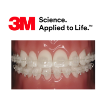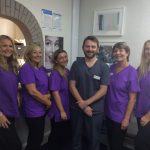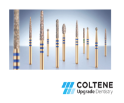 Osteoporosis is a common condition where bone density and quality are reduced and weakened, greatly increasing the risk of the bone fracturing and breaking. At present, more than 3.5 million people in the UK are living with osteoporosis – approximately 7% of men and 22% of women over the age of 50 are currently suffering from the condition.[1]As the large “Baby Boomer” cohort is approaching old age, it is projected that by 2030 more than a fifth of the population will be over 65 years old, and by 2041 this will have risen to more than a quarter of the population.[2]An aging population will see the incidence of osteoporosis and other systemic conditions continue to increase over the coming years.
Osteoporosis is a common condition where bone density and quality are reduced and weakened, greatly increasing the risk of the bone fracturing and breaking. At present, more than 3.5 million people in the UK are living with osteoporosis – approximately 7% of men and 22% of women over the age of 50 are currently suffering from the condition.[1]As the large “Baby Boomer” cohort is approaching old age, it is projected that by 2030 more than a fifth of the population will be over 65 years old, and by 2041 this will have risen to more than a quarter of the population.[2]An aging population will see the incidence of osteoporosis and other systemic conditions continue to increase over the coming years.
While the proportion of the population with edentulism has fallen substantially, there are still well in excess of 2 million edentulous people in the UK, and aging continues to increase the commonality of various oral health conditions (dental caries, periodontitis, xerostomia, oral cancer, etc.).[3],[4]An aging population will almost certainly give rise to a greater number of patients with partial edentulism, many of whom will seek dental implants, and a significant proportion of which will have osteoporosis. It is therefore important to understand this condition and any of its associated risks.
Bone mass acquisition is largely complete within the first two decades of life, though growth can continue into the late twenties. The apex of bone strengthening and density is known as peak bone mass. Generally speaking, women tend to mostly retain their bone mass from age 30 until the onset of menopause. The majority of women then go through a rapid loss of bone tissue, which slows following the resolution of menopause, but will continue for the rest of their lives.[5]Osteoporosis is significantly more common in postmenopausal women, due to the reduction in oestrogen levels. The reduction in oestrogen results in the increased formation and prolonged survival of bone-resorbing osteoclasts.[6]Using oral contraceptives that contain oestrogen is associated with greater bone density, which may have a protective effect later in life.[7]Other conditions and medications that alter hormone levels and function may also increase the risk of osteoporosis. For example, transwomen are at greater risk due to the long-term use of hormone blockers and/or surgical treatment.[8]
Osteoporosis is associated with numerous inflammatory diseases, including rheumatoid arthritis and periodontal disease.[9],[10]Both osteoporosis and periodontitis are characterised by reductions in bone mass and fragility. In addition to the direct effect on bone tissue, menopause can be accompanied by dry mouth and other symptoms that may further encourage the development of periodontal disease.[11]
Research suggests that receiving treatment for osteoporosis reduces the prevalence of severe periodontitis, relative to those going untreated.[12]Osteoporosis treatments for postmenopausal women include hormone replacement therapy (oestrogen, sometimes with progestin), bisphosphonates, selective oestrogen receptor modulators (SERMs), supplements (calcium and vitamin D), and in rare cases parathyroid hormones.[13]
Bisphosphonates are commonly prescribed for osteoporosis (as well as for Paget’s disease). Osteoporosis is characterised by the rate of bone resorption exceeding the rate of bone formation, resulting in net bone loss. Bisphosphonates counter this by reducing osteoclastic activity and suppressing bone remodelling and replacement.[14]Patients receiving bisphosphonates are at risk of developing medication-related osteonecrosis of the jaw (MRONJ), a painful and potentially debilitating condition. Despite being relatively rare, where it does occur it is a potentially serious complication, resulting in progressive destruction of the bone in the maxillofacial region. Though bisphosphonates have a short half-life (30-120 minutes), once they have been incorporated into bone tissue, they can remain there for over a decade. Periodontal infection, tooth extraction and cancer have been established as risk factors and potential triggers for MRONJ.[15]
Smoking, a lack of physical activity, and poor nutrition can all lead to relatively low bone density. If patients follow these habits before reaching peak bone density, their likelihood of developing osteoporosis may increase.[16]Engaging in exercise (though not excessively) and getting adequate calcium and vitamin D – particularly while the bones are still developing – will help strengthen them, encouraging a higher peak bone mass.[17]
We might assume that the reduced bone quality that characterises osteoporosis – and the association between it and various systemic conditions – could compromise osseointegration and, therefore, increase the risk of dental implant failure. However, the literature on this subject is uncertain. Failure rates for patients with osteoporosis appear to be in line with those without the condition.[18],[19],[20]Osteoporosis may however increase peri-implant bone loss.[21]This emphasises the importance of selecting a high quality implant solution. The innovative Z1®system from TBR, for example, features a highly resilient titanium body and an intelligently designed zirconia collar, which helps to protect the crestal bone and gingiva from iatrogenic inflammation. Protecting the bone-implant interface from infection is critical to osseointegration and the long-term success of the implant.[22]
Whilst particular care must be taken with patients suffering from compromised health and frailty, osteoporosis on its own is not a contraindication to the provision of dental implants. However, if a patient is receiving bisphosphonates for the condition, it is important to properly educate them on the risk of osteonecrosis.[23]
For more information on the Z1®implant, visit tbr.dental, email support@denkauk.comor call 0800 707 6212
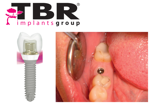
REFERENCES
[1]International Osteoporosis Foundation. Broken bones, broken lives: a roadmap to solve the fragility facture crisis in the United Kingdom. International Osteoporosis Foundation. 2018. https://www.iofbonehealth.org/broken-bones-broken-livesJune 13, 2019.
[2]ONS. Living longer: how our population is changing and why it matters. Office for National Statistics. 2018. https://www.ons.gov.uk/peoplepopulationandcommunity/birthsdeathsandmarriages/ageing/articles/livinglongerhowourpopulationischangingandwhyitmatters/2018-08-13June 13, 2019.
[3]Ramsay S., Whincup P., Watt R., Tsakos G., Papacosta A., Lennon L., Wannamethee S. Burden of poor oral health in older age: findings from a population-based study of older British men.BMJ Open. 2015; 5: e009476. https://bmjopen.bmj.com/content/5/12/e009476June 13, 2019.
[4]Thomson W., Ma S. An ageing population poses dental challenges. Singapore Dental Journal. 2014; 35: 3-8. https://www.sciencedirect.com/science/article/pii/S0377529114200095June 13, 2019.
[5]National Institute of Arthritis and Musculoskeletal and Skin Diseases. Osteoporosis: peak bone mass in women. National Institute of Health. 2018. https://www.bones.nih.gov/health-info/bone/osteoporosis/bone-massJune 13, 2019.
[6]Steves C., Bird S., Williams F., Spector T. The microbiome and musculoskeletal conditions of again: a review of evidence for impact and potential therapeutics. Journal of Bone and Mineral Research. 2016; 31(2): 261-269. https://onlinelibrary.wiley.com/doi/full/10.1002/jbmr.2765June 13, 2019.
[7]National Institute of Arthritis and Musculoskeletal and Skin Diseases. Osteoporosis: peak bone mass in women. National Institute of Health. 2018. https://www.bones.nih.gov/health-info/bone/osteoporosis/bone-massJune 13, 2019.
[8]Sedlak C., Roller C., van Dulmen M., Alharbi H., Sanata J., Leifson M., Veney A., Alhawatmeh H., Doheny M. Transgender individuals and osteoporosis prevention. Orthopaedic Nursing. 2017; 36(4): 259-268. https://nursing.ceconnection.com/ovidfiles/00006416-201707000-00005.pdf
June 13, 2019.
[9]Steves C., Bird S., Williams F., Spector T. The microbiome and musculoskeletal conditions of again: a review of evidence for impact and potential therapeutics. Journal of Bone and Mineral Research. 2016; 31(2): 261-269. https://onlinelibrary.wiley.com/doi/full/10.1002/jbmr.2765June 13, 2019.
[10]Koduganti R., Gorthi C., Sandeep N. Osteoporosis: a risk factor for periodontitis. Journal of Indian Society of Periodontology. 2009; 13(2): 90-96. https://www.ncbi.nlm.nih.gov/pmc/articles/PMC2847131/June 13, 2019.
[11]Gopinath V., Prabhu M., Suryawanshi H. Osteoporosis and periodontal disease – a review. International Journal of Innovations in Dental Sciences. 2016; 1(1): 27-37. https://pdfs.semanticscholar.org/51f0/ebefcade10fd8d72e6d23d964b22c6c4e7f1.pdfJune 13, 2019.
[12]Passos-Soares J., Vianna M., Gomes-Filho I., Cruz S., Barreto M, Adan L., Rösing C., Trinadade S., Cerqueira E., Scannapieco F. Association between osteoporosis treatment and severe periodontitis in postmenopausal women. Menopause. 2017; 24(7): 789-795. https://journals.lww.com/menopausejournal/Abstract/2017/07000/Association_between_osteoporosis_treatment_and.12.aspxJune 13, 2019.
[13]NHS. Treatment: osteoporosis. NHS. 2016. https://www.nhs.uk/conditions/osteoporosis/treatment/June 13, 2019.
[14]Venkatakrishnan C., Bhuminathan S., Chandran C., Poovannan S. Dental implants in patients with osteoporosis – a review. Biomedical & Pharmacology Journal. 2017; 10(3): 1415-1418. http://biomedpharmajournal.org/vol10no3/dental-implants-in-patients-with-osteoporosis-a-review/June 13, 2019.
[15]Di Fede O., Panzarella V., Mauceri R., Fusco V., Bedogni A., Lo Muzio L., SIPMO ONJ Board, Campisi G. The dental management of patients at risk of medication-related osteonecrosis of the jaw: new paradigm of primary prevention. BioMed Research International. 2018; 2018: 2684924. https://www.ncbi.nlm.nih.gov/pmc/articles/PMC6164200/June 13, 2019.
[16]National Institute of Arthritis and Musculoskeletal and Skin Diseases. Osteoporosis: peak bone mass in women. National Institute of Health. 2018. https://www.bones.nih.gov/health-info/bone/osteoporosis/bone-massJune 13, 2019.
[17]National Institute of Arthritis and Musculoskeletal and Skin Diseases. Osteoporosis: peak bone mass in women. National Institute of Health. 2018. https://www.bones.nih.gov/health-info/bone/osteoporosis/bone-massJune 13, 2019.
[18]Giro G., Chambrone L., Goldstein A., Rodrigues J., Zenóbio E., Feres M., Figueiredo L., Cassoni A., Shibli J. Impact of osteoporosis in dental implants: a systematic review. World Journal of Orthopedics. 2015; 6(2): 311-315. https://www.wjgnet.com/2218-5836/full/v6/i2/311.htmJune 13, 2019.
[19]Radi I., Ibrahim W., Iskandar S., AbdelNabi N. Prognosis of dental implants in patients with low bone density: a systematic review and meta-analysis. The Journal of Prosthetic Dentistry. 2018; 120(5): 668-677. https://www.thejpd.org/article/S0022-3913(18)30094-5/fulltextJune 13, 2019.
[20]De Medeiros F., Kudo G., Leme B., Saraiva P., Verri F., Honório H., Pellizzer E., Santiago Jr. F. Dental implants in patients with osteoporosis: a systematic review with meta-analysis. International Journal of Oral & Maxillofacial Surgery. 2018; 47(4): 480-491. https://www.ijoms.com/article/S0901-5027(17)31484-4/fulltextJune 13, 2019.
[21]De Medeiros F., Kudo G., Leme B., Saraiva P., Verri F., Honório H., Pellizzer E., Santiago Jr. F. Dental implants in patients with osteoporosis: a systematic review with meta-analysis. International Journal of Oral & Maxillofacial Surgery. 2018; 47(4): 480-491. https://www.ijoms.com/article/S0901-5027(17)31484-4/fulltextJune 13, 2019.
[22]Wang Y., Zhang Y., Miron R. Health, maintenance, and recovery of soft tissues around implants. Clinical Implant Dentistry and Related Research. 2015; 18(3): 618-634. https://onlinelibrary.wiley.com/doi/abs/10.1111/cid.12343June 13, 2019.
[23]Venkatakrishnan C., Bhuminathan S., Chandran C., Poovannan S. Dental implants in patients with osteoporosis – a review. Biomedical & Pharmacology Journal. 2017; 10(3): 1415-1418. http://biomedpharmajournal.org/vol10no3/dental-implants-in-patients-with-osteoporosis-a-review/June 13, 2019.





 The practise of making chocolate dates back thousands of years. It is produced from the cacao beans of pods that grow from theTheobrama cacao– a tropical tree (whose scientific name translates to “food of the gods”) that is native to Central and South America, but is also now widely cultivated in West Africa. The Olmecs of ancient Latin America were almost certainly the first to turn the cacao bean into chocolate, although not as we know it today. They roasted and ground the beans into powder, which was mixed with fluids for use as a ceremonial drink and as medicine. Historians believe this knowledge was passed down to the Mayans, who praised chocolate as a gift from the gods. Cacao beans became so valuable that they were prized above gold and traded as currency among the Aztecs.
The practise of making chocolate dates back thousands of years. It is produced from the cacao beans of pods that grow from theTheobrama cacao– a tropical tree (whose scientific name translates to “food of the gods”) that is native to Central and South America, but is also now widely cultivated in West Africa. The Olmecs of ancient Latin America were almost certainly the first to turn the cacao bean into chocolate, although not as we know it today. They roasted and ground the beans into powder, which was mixed with fluids for use as a ceremonial drink and as medicine. Historians believe this knowledge was passed down to the Mayans, who praised chocolate as a gift from the gods. Cacao beans became so valuable that they were prized above gold and traded as currency among the Aztecs. Some studies suggest that dark chocolate could be effective at protecting the teeth and gums from disease. This is because dark chocolate often contains a higher cacao bean content than milk or white chocolate, equating to a greater number of antioxidants. In fact, some dark chocolates contain far more antioxidants than green tea and red wine.
Some studies suggest that dark chocolate could be effective at protecting the teeth and gums from disease. This is because dark chocolate often contains a higher cacao bean content than milk or white chocolate, equating to a greater number of antioxidants. In fact, some dark chocolates contain far more antioxidants than green tea and red wine.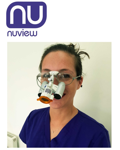
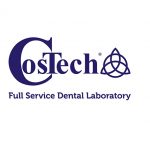
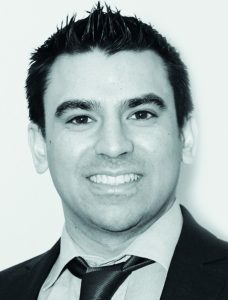 In dentistry, the list of available restorative materials continues to grow exponentially. Inspired by the quest for better aesthetics or better strength and longevity, new materials are being explored through research all the time, and many of these work their way into day-to-day usage.
In dentistry, the list of available restorative materials continues to grow exponentially. Inspired by the quest for better aesthetics or better strength and longevity, new materials are being explored through research all the time, and many of these work their way into day-to-day usage.
